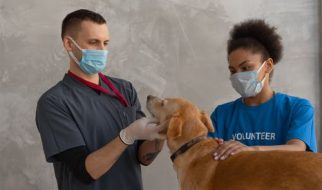Your dog’s internal organs may sometimes require visibility for your veterinarian to predict the state of health accurately. Diagnostic imaging aids your veterinarian in doing that. Each diagnostic imaging tool provides an opportunity to view your dog’s body to give your vet a complete overview of their condition.
As you’re aware, a regular canine wellness examination includes your vet weighing your dog and evaluating his general health. There’s nothing you can determine the state of your dog’s health from the outside; therefore, this simple eye exam, dental examination as well as stethoscope heartbeat hearing can provide clues. If you have any questions about your dog’s internal mechanisms can be addressed using diagnostic imaging.
Your dog’s diagnostic imaging is secure and is not intrusive. The veterinarian will go over the procedure with you and answer any questions. Diagnostic imaging can assist your dog in receiving the highest medical treatment available.
Types of Animal Diagnostic Imaging
One thing all dog diagnostic tests have the same thing in common: they provide internal “pictures” of various anatomical elements, which assist your veterinarian in making a more accurate diagnosis of your dog’s condition. These diagnostic imaging devices give your veterinarian the knowledge required to recommend the most efficient course of therapy for your dog, from assessing fractures to identifying interior inflammation.
X-Rays
You probably have a thorough understanding of radiographs, commonly called X-rays. They are the most often utilized piece of diagnostic equipment in animal hospitals.
Even though veterinarians utilize smaller X-ray equipment specifically for dogs, the X-raying procedure is the same for humans. Your dog is situated so that the beam of X-rays can be directed towards a specific region. Your dog is in good hands since the radiation is very low.
X-rays can reveal fractured bones, arthritis, fractured bones, foreign bodies in the digestive tract, and other common problems. Since sedation relaxes dogs, lowers their nervousness, and ensures that veterinarians can take the required photos, your dog can get sedated to perform the x-ray.
Ultrasounds
The vet may suggest an ultrasound if they suspect your pet suffers from a cardiac condition. Compared to a conventional, conventional X-ray is a better instrument for revealing the delicate nature of organs and soft tissues.
An ultrasound device has tiny probes on the body of your dog. The organs and tissues of your dog will be visible on the screen because the exam sends sound waves into the dog’s body and receives echoes back. Your dog’s heart could be observed on an X-ray; however, an ultrasound scan is better at identifying the presence and severity of heart diseases.
Potential problems include fluid buildup and reduced blood flow. They all require different forms of treatment. Both X-rays and ultrasounds are frequently utilized in clinical practice. Consult your veterinarian for a physical exam for dogs.
Dog MRI
If your dog is experiencing movement issues, your veterinarian may advise getting him an MRI. An MRI is the most effective way to determine any brain or spinal cord damage. It works particularly well to show the presence of internal bleeding or inflammation.
If you’ve ever experienced an MRI, you know that the process of scanning requires placing the patient inside a tubular machine. The situation that your dog is in is comparable. Your pet will be laid to rest so they won’t be scared, and the MRI will be able to work its magic. Click here to get more information.
CT Scans
A vet may ask for a CT scan if an animal’s organ, bone, muscle, or internal body part needs to be examined more precisely. However, a computed tomography scan is similar to the standard X-ray scan in that it takes pictures of slices of the patient and provides excellent resolution. It later reconstructs the pieces into three-dimensional models of an affected region.
A CT scan for pets is similar to one performed on a human. The only difference in the procedure is that most pets require anesthesia to stay still throughout the treatment. The equipment, including the machine, is mostly the same. Visit a veterinary website to know where to get quality veterinary care.








